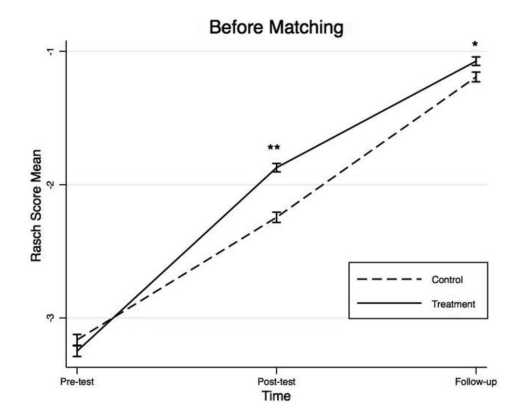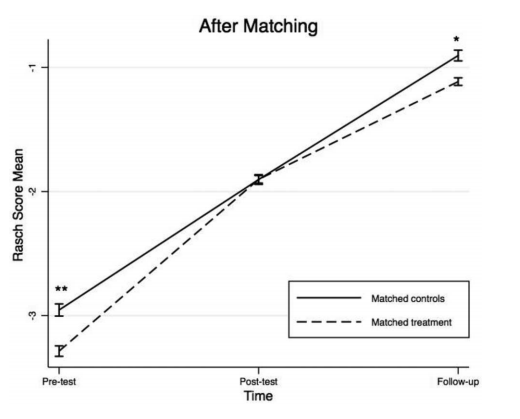The most common explanation (and the one that I had always assumed was right) centers on the content these children were taught after the intervention ended. Instruction must continue to challenge these children, to extend their accomplishments. If teachers emphasize more basic material, naturally we’ll observe fadeout.
I’ve sometimes used this metaphor: early intervention is not like setting the trajectory of a rocket, a one-time event that, if you get it right, you needn’t think about again. It’s more like extra fuel in the booster rocket; it gets kids to the right altitude early on, but you’ve got to ensure that they have the same fuel in their rocket that other kids do after the intervention.
A recent article by Drew Baily and colleagues (2016) casts doubt on this explanation. They call it the Constraining Content hypothesis, and set forth a competing explanation they call the Pre-Existing Differences hypothesis.
You identified a bunch of students who were either behind or at risk for being behind. You intervened. At the end of the year, they are no longer behind. Fine, but you didn’t select students for the intervention randomly. You picked them because they were behind, and at least some of the reasons they were behind will still be present at the end of the intervention.
Maybe their home environment does not support mathematics achievement, for any of a large number of reasons. Maybe these children’s beliefs about mathematics and expectations of themselves differ. Maybe their working memory capacity and/or general intelligence differ. Whatever the reasons children start preK behind, is there any good reason to suppose those factors have magically disappeared by the end of the intervention? Or that they won’t affect math achievement any more?
Here’s how Baily and colleagues compared the constraining content and the pre-existing differences hypotheses. They used a preK math intervention that is known to work (Building Blocks). They measured math ability at the start of preK, at the end of preK (after the intervention) and at the end of Kindergarten. You’d expect to see better scores for the kids getting the intervention (compared to controls) at the end of preK, but then a diminution of that advantage at the end of Kindergarten—classic fadeout—and that’s what you see. Here are the results of the overall treatment and control groups.
All children were to receive the same instruction in the kindergarten. So if the Constraining Content hypothesis is right, the two groups should show comparable learning. But the Pre-Existing Differences hypothesis makes a different prediction. The control kids who nevertheless scored as well as the intervention kids had something going for them during the preK year—lots of support at home, lots of math smarts, whatever. Those factors will still contribute in kindergarten, so these control kids will score better than the intervention kids at the end of kindergarten.
And crucially, those out-of-school factors are still present at followup. Even though they experienced the same instruction during kindergarten and began the year with comparable math knowledge, by the end of the year they are doing better.
The researchers had another way to compare the Constraining Content and the Pre-Existing Differences hypotheses. Students are paired by score—one control and one intervention kid who scored comparably on the post-test. They sorted these pairs so there is a higher- and a lower-achieving group. Then they looked at the followup scores of each group. The Constraining Content hypothesis predicts that fadeout will be worse for higher scoring kids…they are the ones who are most affected by the not-very-challenging content….lower scoring kids should be catching up to the higher scoring kids because for them, the instruction is challenging. BUT the data showed exactly equivalent gains in the high- and low-scoring pairs.
We need a new metaphor. Intervention for at-risk students is not resetting the trajectory of the rocket, but it’s not just extra fuel in the booster rocket to get them to altitude, after which one must ensure they still have fuel in the rocket. If they are to keep pace with their peers, they continue to need extra fuel in the rocket after the intervention.


 RSS Feed
RSS Feed